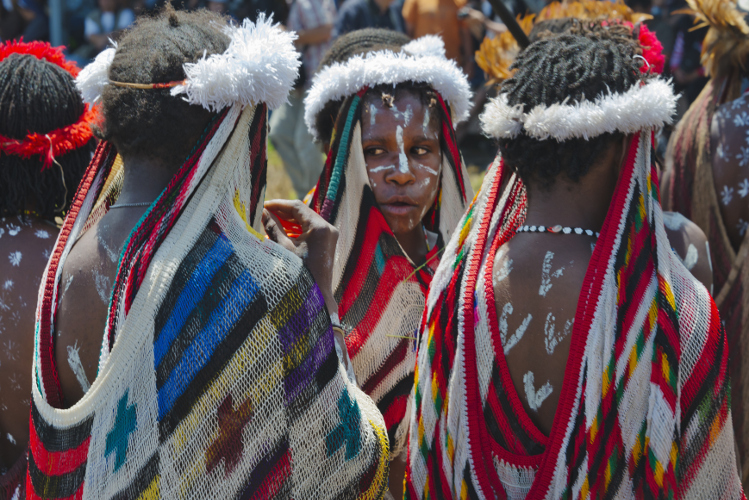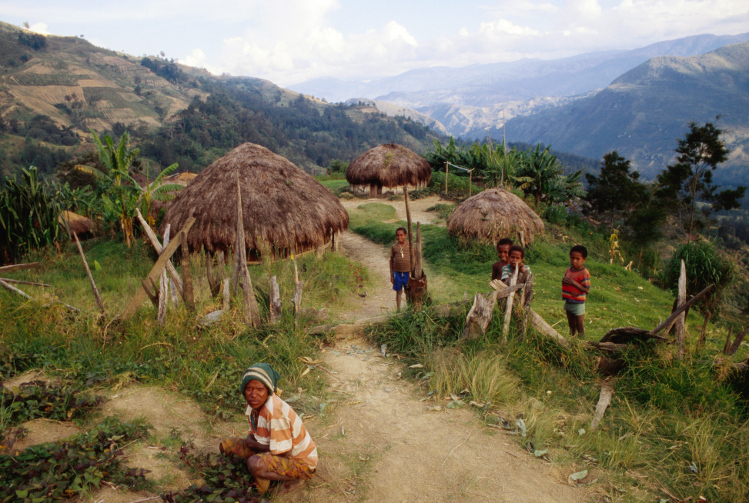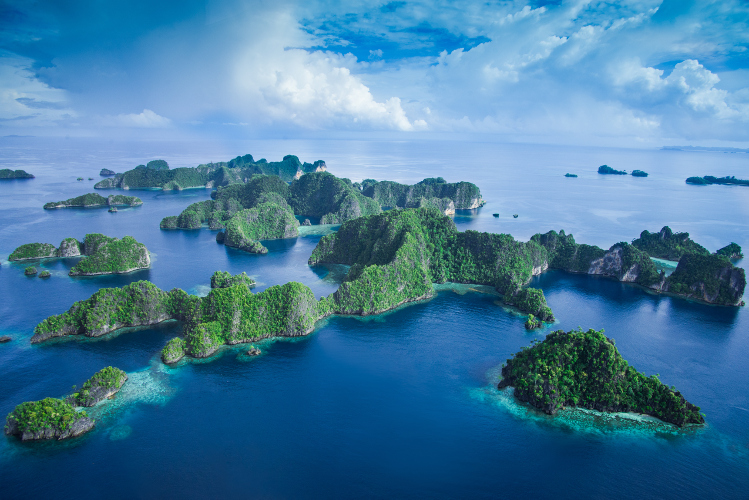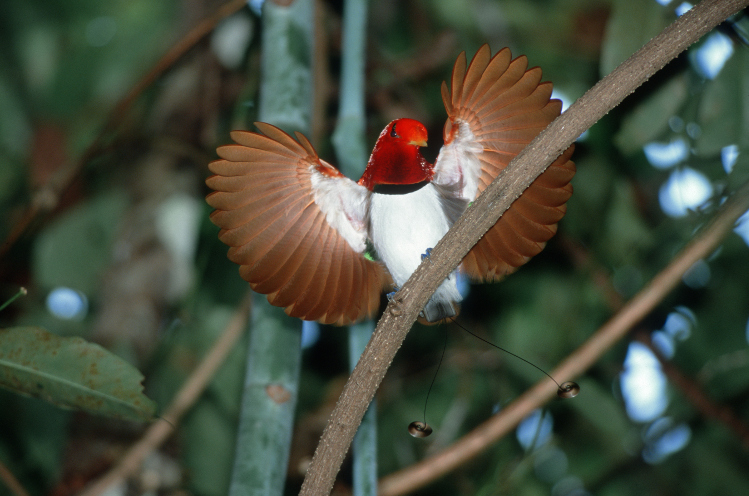Jayapura, the provincial capital of Papua and the entry point to the region for many travellers, has a distinctly contemporary Indonesian vibe. Although attractions in the city are pretty limited, it’s the place to get the travel permits you need for heading to more remote areas.

Inland of Jayapura, Melanesian tradition asserts itself. Head for the highland town of Wamena, an hour’s flight away. It’s home to Papua’s famous Dani tribespeople and the gateway to the Baliem Valley. Although wearing traditional dress is becoming more rare in the town itself, as soon as you head into the countryside you may start feeling overdressed among older men sporting little but penis gourds.
The trekking in the mountains at the southern end of the Baliem Valley is world class and this is the big draw for many visitors. The scenery is inspiring and the walking is fairly challenging and often very muddy, but it’s the cultural interactions that provide the most lasting memories. Sleeping on straw floors in a thatched hut and eating sweet potatoes (the ‘national dish’ of the highlands) with a family in traditional dress will make you feel like an 18th century explorer.

Many Papuans are subsistence farmers, and food is a constant preoccupation. Staples are pigs, sago and sweet potatoes. In the south, venison from wild deer may be on the menu; on the coast or upriver, fish provides protein. Local diet is meat-and-carbohydrate heavy and has little seasoning – travelling with a small jar of chilli or soy sauce can help to boost flavour.
The highlands don’t have a monopoly on stunning landscapes. The Raja Ampat islands, a cluster of hundreds of often uninhabited islands off the northwest tip of Papua, for example, looks as it was created for all the other tropical islands of the world to be moulded upon. On land, there are forests and birds of paradise, but it’s the underwater life that most people come here for, with many divers claiming the archipelago to have the best diving and most pristine coral reefs in all the world.

Out bush, wildlife includes endemic tree-kangaroos, possum-like cuscus and gorgeous birds of paradise. As with most native wildlife, actually finding it requires local knowledge. Fortunately, guides always seem to materialise when you need them. Ask if there is a nearby dancing-tree, where groups of male birds of paradise hang out daily up high, prancing and preening their plumes. It’s a fantastic sight.
Around the southern township of Merauke, Wasur National Park offers a particularly good day trip for spotting wildlife. With flocks of seasonal migratory birds on the coastal flats and wallabies feeding on the floodplains, you can be mistaken for thinking you’re in Australia.
There are some 250 indigenous languages spoken across Indonesian Papua, but in coastal areas Bahasa Indonesia is widely spoken. In more remote, inland regions, good English-speakers are few. Tall, fair travellers in remote villages may occasionally be greeted by elderly villagers speaking perfect, formal Dutch – an unexpected reminder of former colonial days.

The colonial concern with order and punctuality has long gone in Papua. Accommodation is often fairly basic (and almost always more expensive than you’d pay for similar lodgings elsewhere in Indonesia), and timetables are very flexible, so enjoy slowing down rather than worry about catching up. You get as good as you give travelling in Papua. And, given time and patience, it repays in spades.